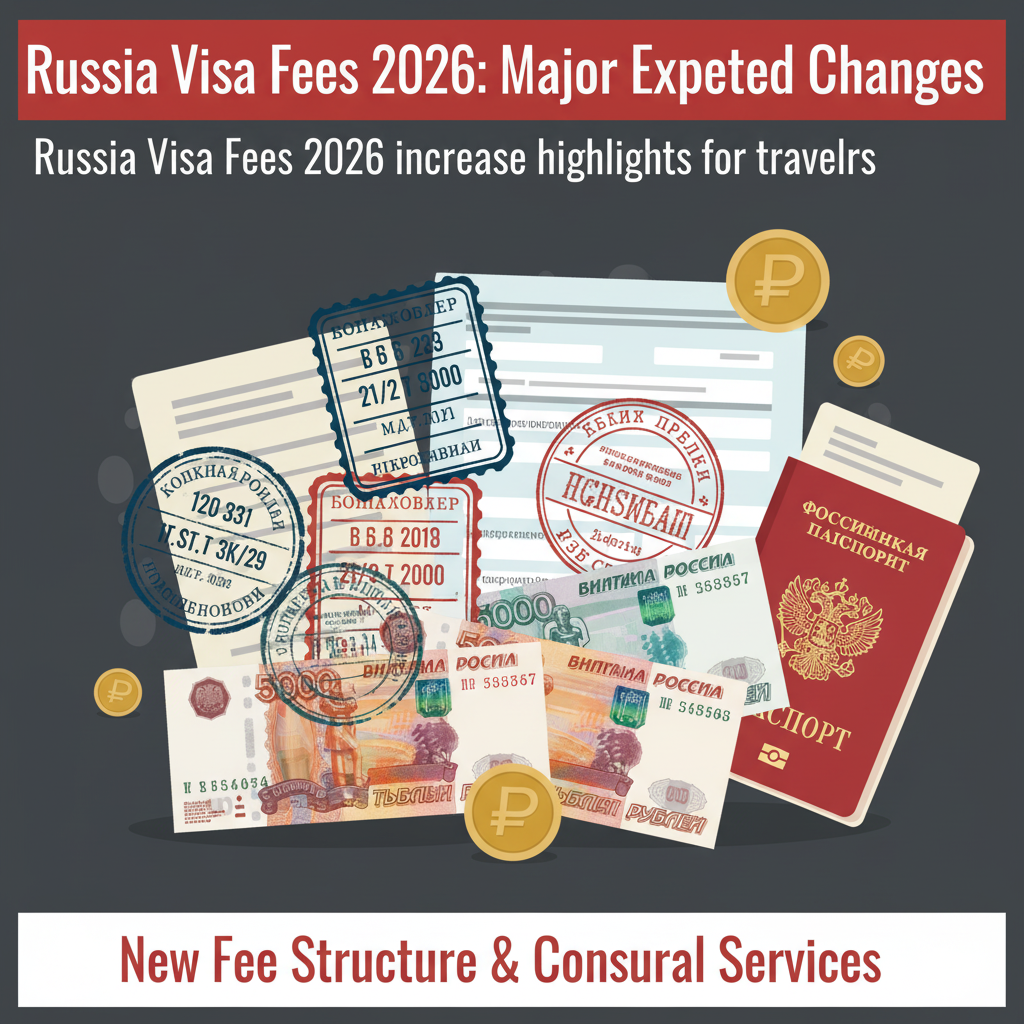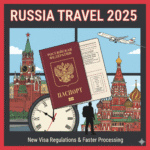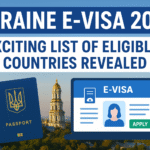As Russia continues modernizing its travel and immigration systems, 2026 is shaping up to be a transformative year for visa applicants. The Russia Visa Fees 2026 updates are expected to bring significant changes to how tourists, business travelers, and expatriates apply — and how much they pay.
These changes come amid ongoing global inflation, exchange rate fluctuations, and the country’s push toward digital visa platforms. If you’re planning a trip or relocation to Russia in 2026, understanding these updates could save you both time and money.
Let’s break down what’s changing, why it matters, and how you can prepare for the new visa fee structure.
Current Russia Visa Fees 2026 Overview
Before we explore 2026, it’s essential to understand the current baseline:
| Visa Type | Current Average Fee (2025) | Processing Time | Validity |
|---|---|---|---|
| Tourist Visa | $80–$100 | 10–15 business days | Up to 30 days |
| Business Visa | $150–$250 | 10–20 business days | Up to 1 year |
| Work Visa | $250–$350 | 20–30 business days | 1 year (extendable) |
| Student Visa | $50–$100 | 10–20 business days | Based on program duration |
| E-Visa (Single Entry) | $40 | 4–6 days | 16 days |
These fees vary depending on nationality, consulate, and processing speed (standard, urgent, or express).
What’s Changing in 2026: Key Predictions and Leaks
Although the Russian Ministry of Foreign Affairs has not released final rates, internal drafts and diplomatic discussions suggest a moderate fee increase of 10–25% across most visa categories.
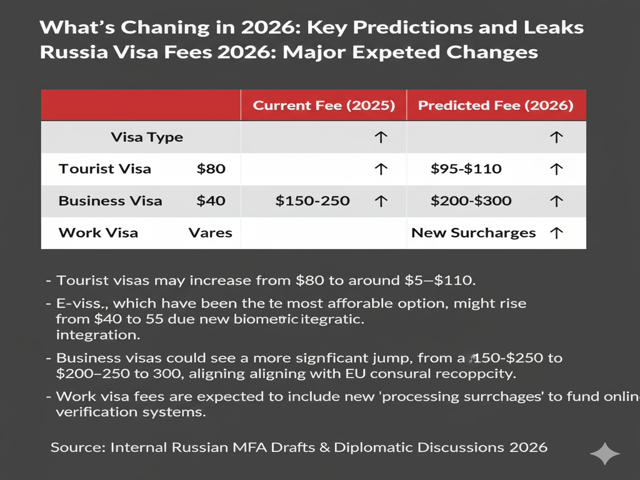
Key Expected Adjustments:
- Tourist visas may increase from $80 to around $95–$110.
- E-visas, which have been the most affordable option, might rise from $40 to $55 due to new biometric integration.
- Business visas could see a more significant jump, from $150–$250 to $200–$300, aligning with EU consular reciprocity.
- Work visa fees are expected to include new “processing surcharges” to fund online verification systems.
E-Visa Expansion: Digital but Slightly Pricier
Russia e-visa program — one of its most successful digital transformations — is expanding to more nationalities in 2026. However, this expansion comes with added biometric verification, requiring enhanced background checks.
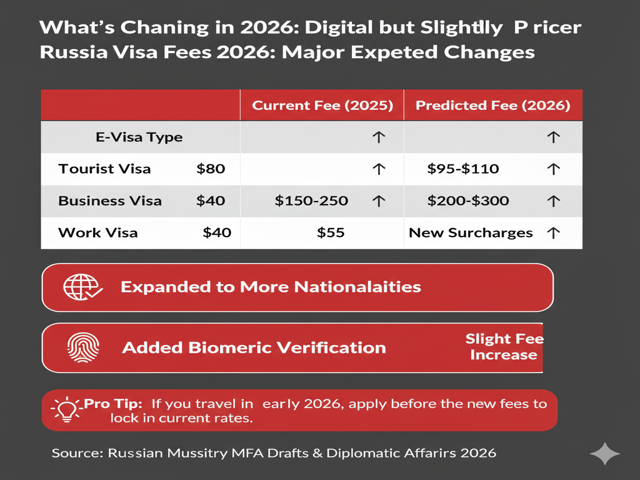
While this improves security and simplifies entry for most travelers, it also explains the slight fee increase expected next year.
Tip: If you plan to travel in early 2026, apply before the new fee structure takes effect to lock in current rates.
Tourist, Business, and Work Visa Fee Comparisons
Here’s a quick comparison of expected average visa fees before and after the 2026 update:
| Visa Type | 2025 Fee (USD) | 2026 Expected Fee (USD) | % Increase |
|---|---|---|---|
| Tourist | $80–$100 | $95–$110 | 15% |
| E-Visa | $40 | $55 | 38% |
| Business | $150–$250 | $200–$300 | 20% |
| Work | $250–$350 | $275–$375 | 10% |
| Student | $50–$100 | $60–$110 | 10% |
Why Russia Is Adjusting Visa Fees
There are several strategic reasons behind the russia visa fees 2026 review:
- Global Cost Alignment: Bringing Russian visa fees closer to EU and OECD averages.
- Digital System Maintenance: The rollout of new e-visa software and biometric systems increases operational costs.
- Economic Recovery: The new fee model supports government funding amid currency fluctuations.
- Reciprocity Principle: Adjusting fees to match other countries’ treatment of Russian citizens.
How Travelers Can Prepare for 2026
Planning ahead can minimize the impact of higher costs. Here’s how:
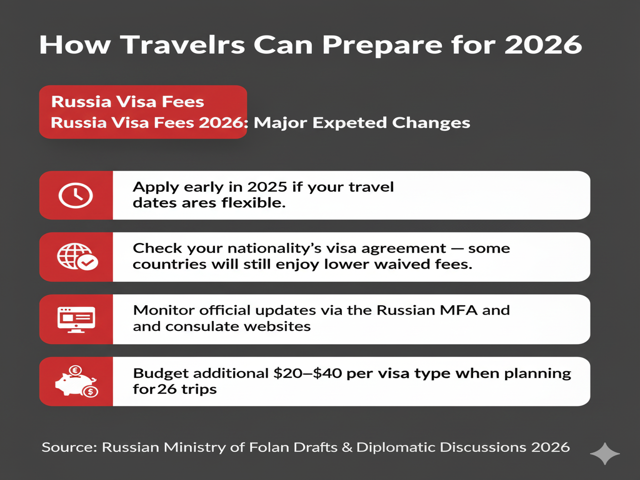
- Apply early in 2025 if your travel dates are flexible.
- Check your nationality’s visa agreement — some countries will still enjoy lower or waived fees.
- Monitor official updates via the Russian MFA and consulate websites.
- Budget additional $20–$40 per visa type when planning for 2026 trips.
Impact on Global Travelers and Tour Operators
Travel agencies and visa consultants are already preparing for adjustments in their service fees. Tour packages that include visa assistance may see a 5–10% price rise, particularly for long-stay or multi-entry trips.
For digital nomads and freelancers planning longer stays, Russia’s Temporary Residence or Work Visa options might become more appealing — despite slightly higher upfront costs.
Ministry of Foreign Affairs of the Russian Federation (MFA) Official announcements about Russian visa fees, entry rules, and consular procedures.
Russia’s Long-Term Vision: Simplified Entry and Digital Access
Even with rising costs, the Russian government aims to make the visa process more transparent and efficient.
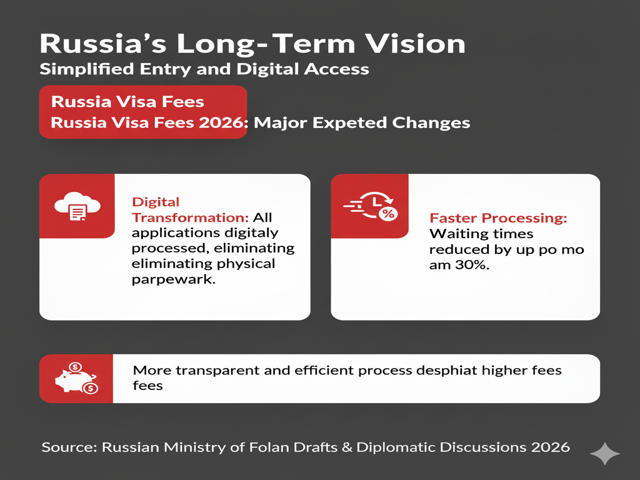
By 2026, nearly all applications — from tourist to business visas — will be digitally processed, eliminating physical paperwork for most travelers.
This digital transformation is expected to reduce waiting times by up to 30%, offering a faster experience despite higher fees.
Read Also: Russia E-Visa 2025 Expansion to More Nationalities
FAQs About Russia Visa Fees 2026
Q1. When will the new russia visa fees 2026 take effect?
Most likely from April to July 2026, depending on the visa category.
Q2. Will e-visa prices increase too?
Yes, but only slightly — to cover biometric and verification costs.
Q3. Can I apply under the 2025 rates before the change?
Yes. Travelers who apply before the official implementation date will be charged the current 2025 rates.
Q4. Are Russian student visa fees changing?
Yes, slightly — a 10% increase is expected for administrative updates.
Q5. How can I stay updated on the official announcement?
Follow the Russian Ministry of Foreign Affairs or your nearest Russian consulate for verified updates.
Agent Advise: Prepare Early and Travel Smart
While the upcoming Russia Visa Fees 2026 updates might raise costs slightly, the broader vision behind the reform is modernization and global alignment. By applying strategically and budgeting early, travelers can avoid fee shocks and continue enjoying smoother entry into one of the world’s most fascinating destinations.
Key takeaway: Don’t wait until mid-2026 — plan your Russian travel and visa applications ahead to secure the best rates.

